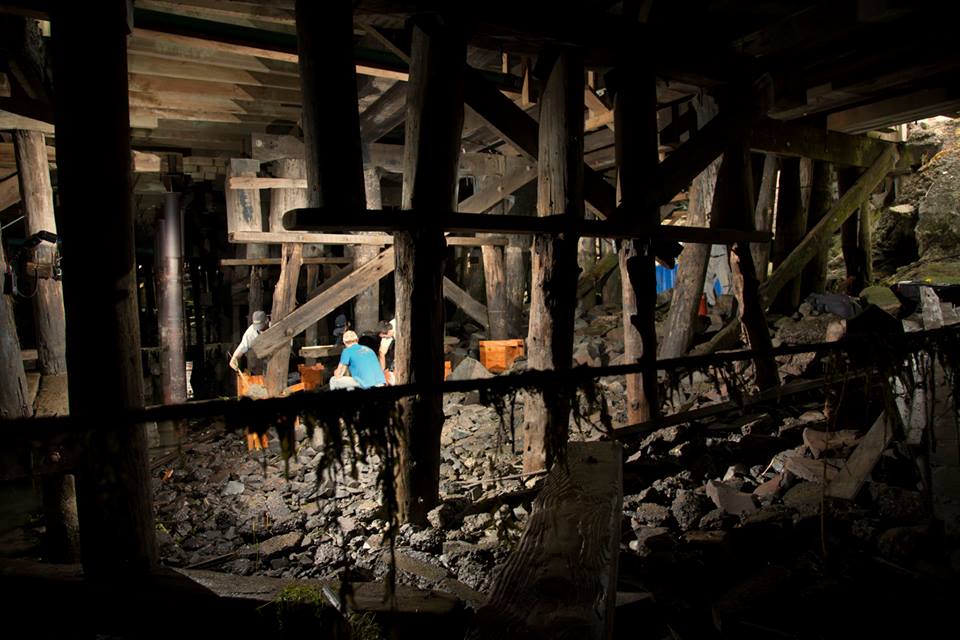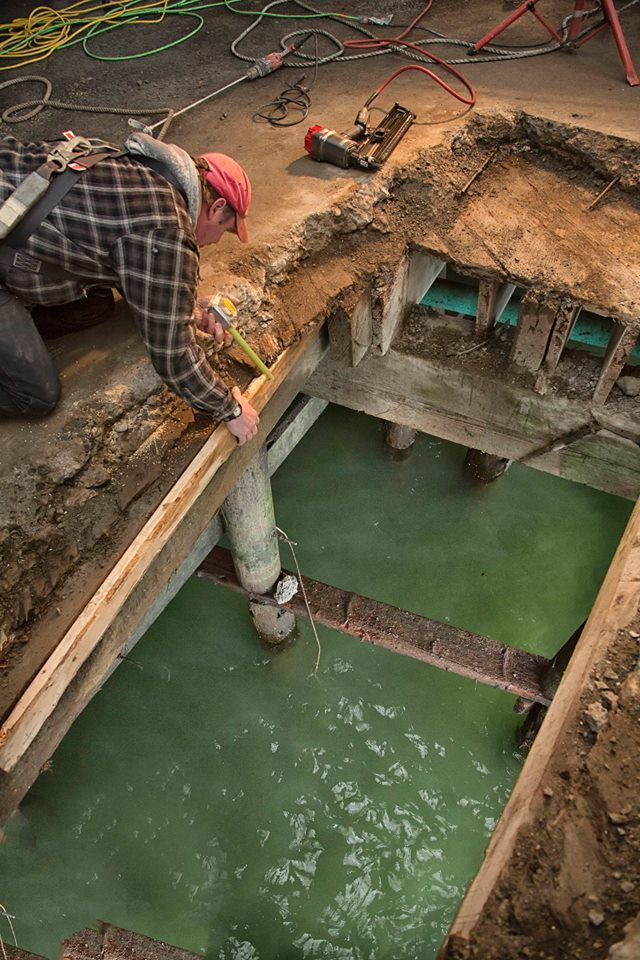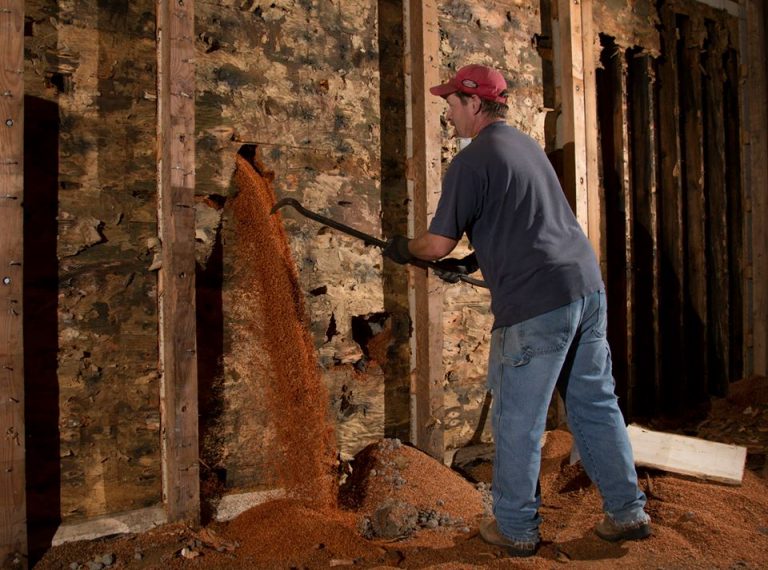From Warehouse to Beerhouse: Reclaiming Old Buildings for New Spaces with Buoy Beer

Image: ©Michael Mathers (http://michaelmathers.com/)
As a building renewal and adaptive re-use nerd (still with me?), I thought it’d be interesting to explore how they took a dilapidated fish cannery and turned it into a gorgeous space.
Nowadays, locals and visitors alike enjoy beer, food, and an amazing view of the Columbia (and of course the sea lions in the glass floor). So, why do older buildings make such great breweries and places to enjoy beer? What makes Astoria unique? And are breweries helping Main Streets, communities and cities re-emerge and thrive? Here are Buoy founders Luke Colvin and Dave Kroening in their own words.
The Buoy Story
He said it’d take half a million dollars to get the pilings up to structural levels to put a brewery in there, and another half a million just to do fire protection. Two days later, I called him from under the building with a piling engineer and said, “The engineer said the pilings are in great shape—we should be good to go.”
So, in a week I took a $1,000,000 potential liability and turned it into $100,000 and all of a sudden it looked viable and away we went.
Making old spaces thrive
Dave Kroening: I think one reason is the style and the culture for craft beer coincides with a lot of these buildings that you’ll see remodeled, ours included, Fort George, and other ones in Astoria, and around the country. The space that breweries need lend themselves to old warehouses or manufacturing facilities. It’s more attractive to have a kind of combination space to go into those old warehouses, where the public can come in and see an old building they might not otherwise get to experience and enjoy. But, at the same time, it’s not just a tourist place. It’s a manufacturing facility, where it used to be, in our case, fish, but now it’s beer.
Astoria’s (still) connection to manufacturing
Colvin: What makes our story different is that some towns will say they don’t have the historic component. Logging and fishing never left Astoria like it may have in some other areas. I think that’s some of the draw to what’s going on in Astoria. It’s a real town doing real things, making things. Astoria is one of the very few towns on the Oregon coast that really has multifaceted economies. Like Dave said, you know, the traditional natural industries, the commercial fishing and the logging, it’s still very strong here. And, it’s much more sustainable than it was generations ago.
The build-out
Colvin: As we started tearing apart walls, there were three or four layers of preserved-grade ship-lapped wood we took and used for other walls and floors. We didn’t have the height needed for the tanks, so we cut out some concrete floors on the second story, and the joists that came with those were big four-inch joists that we cut down and now use for all the tables.
We then opened up some walls and floors that were rotten. That’s how the sea lion glass floor came to be. We had a rotted-out floor and there were sea lions on top of the catwalks. So, rather than pour a new concrete slab over it, the idea came to put the glass over the top it and let people see what the underneath of the building looks like.
The bottom floor, across the south side of the building once housed freezer and cooler rooms and were filled with sawdust or scraps used for insulation. A lot of that cavity got filled with water from the 2007 storms so there was a lot of moisture. We had fun opening up holes in the wall and pulling out trailer after trailer after trailer after trailer of sawdust, to dry the walls out and stop the rot.
That’s one of the good things about breweries is the old warehouse look. People enjoy it and it’s fun to be in. At the same time, it’s also cost effective because you are, in a way, cleaning up what’s there. You’re not building a whole new look that’s spotless.






